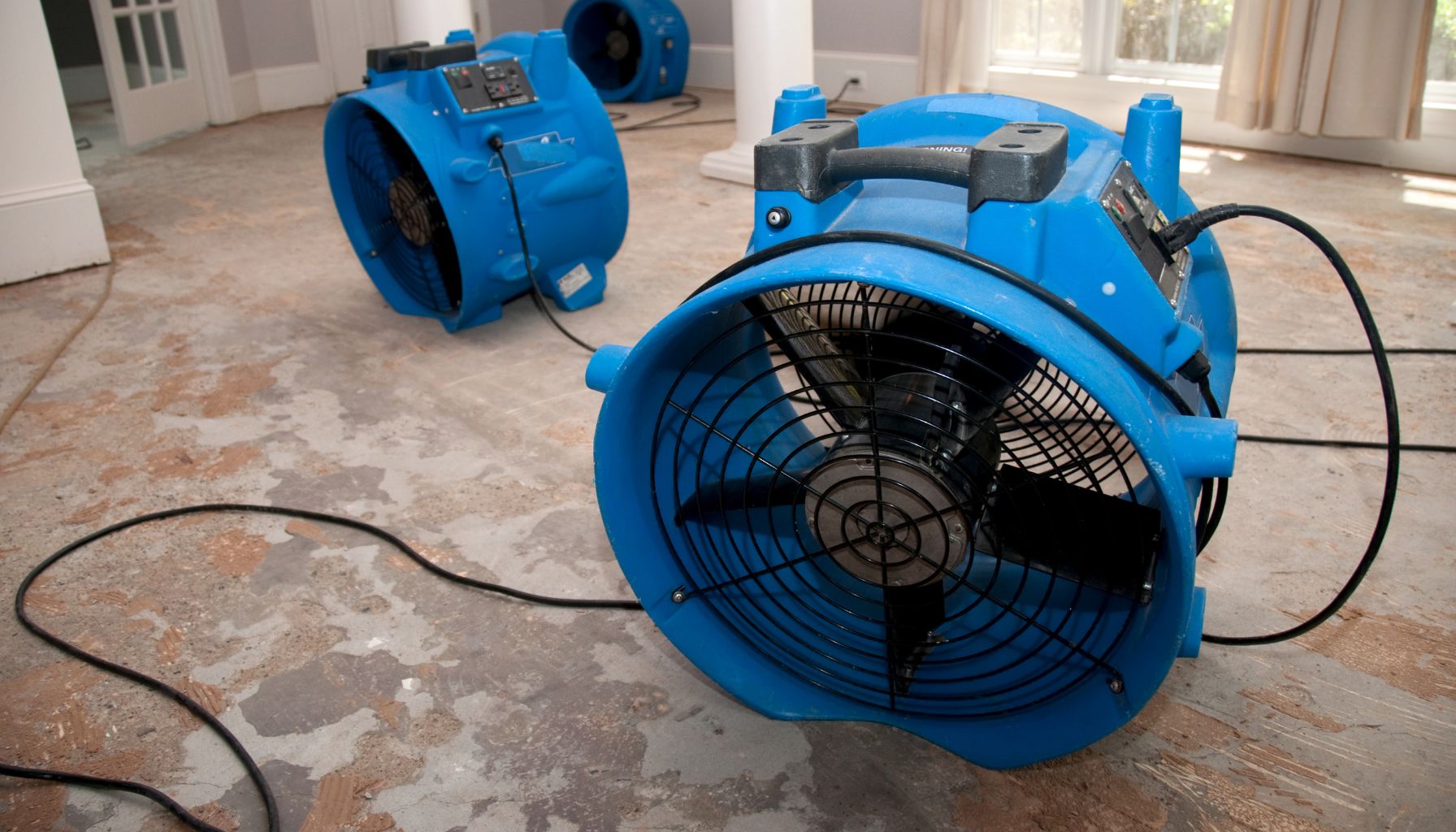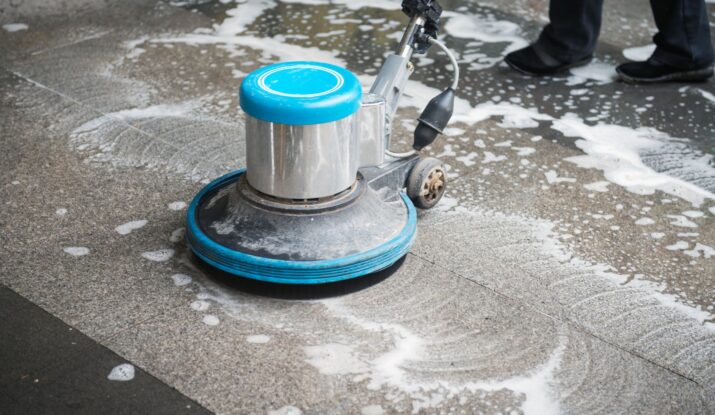Understand the importance of acting quickly and finding a reputable restoration company…
Imagine a scenario: a severe storm has hit your area and your home has been flooded. The water damage is extensive, and you are left feeling overwhelmed and unsure of what to do next.
That’s where professional water damage restoration services come in.
In this ultimate guide, you will discover everything you need to know about these services and how they can help you restore your home to its pre-damaged state. From understanding the importance of acting quickly to finding a reputable restoration company like Pure One Services, we will cover it all. So sit back, relax, and let us guide you through the process of recovering from water damage with ease and efficiency.

Understanding Water Damage
Water damage refers to the destruction or damage caused to a property as a result of water intrusion or flooding. It can occur due to various reasons such as burst pipes, leaks, sewer backups, or natural disasters like hurricanes and heavy rainfall. Understanding water damage and its causes is essential in order to mitigate its effects on your property.
Water damage can have a significant impact on your property if not addressed promptly. It can weaken the structural integrity of your home or business, leading to costly repairs and renovations. Additionally, water damage can result in mold growth, which can pose serious health risks to you and your family. Therefore, it is crucial to address water damage as soon as possible to prevent further damage and ensure the safety of your property.
Water damage can be classified into different classes and categories based on the source of water and the extent of damage. The classes range from Class 1, which involves minimal damage and is typically confined to a small area, to Class 4, which refers to severe damage that requires extensive restoration and reconstruction. Similarly, the categories of water damage denote the level of contaminatio walls or ceilings, musty odors, peeling paint or wallpaper, warped flooring, and visible mold growth. If you notice any of these signs, it is advisable to seek professional assistance for a thorough assessment and restoration of the damage.
Timely resolution of water damage is crucial to prevent further deterioration of your property. The longer water damage is left unattended, the more extensive and costly the restoration process becomes. Addressing the issue promptly not only saves you from unnecessary expenses but also ensures the safety and livability of your property. Therefore, it is important to act quickly when faced with water damage.
Water Damage Assessment
When dealing with water damage, a comprehensive assessment is necessary to determine the extent of the damage, identify the source of water, and establish the appropriate course of action. This assessment is carried out by professionals who specialize in water damage restoration.
The initial visual inspection involves a thorough examination of the affected areas to assess the visible damage and determine the appropriate restoration techniques. During this inspection, professionals will also identify potential safety hazards and take necessary precautions to ensure the safety of everyone involved.
In addition to the visual inspection, advanced detection equipment is used to assess the extent of water damage. This may include moisture meters, thermal imaging cameras, and hygrometers, which provide accurate readings of moisture levels in different materials. These tools help identify hidden areas of moisture and determine the overall moisture content in the affected areas.
Identifying the source of water damage is crucial to prevent further water intrusion and address the root cause of the problem. Professionals use their expertise and specialized equipment to locate the source, whether it’s a leaky pipe, a faulty appliance, or external factors such as flooding. Once the source is identified, necessary repairs or interventions can be carried out to prevent future water damage.
Establishing the extent of water damage is vital in determining the appropriate restoration plan. This includes assessing the affected materials, such as walls, floors, and furniture, and determining whether they can be salvaged or need to be replaced. The extent of damage also influences the duration and complexity of the restoration process.
During the assessment, safety measures are of utmost importance. Professionals follow industry protocols to ensure the safety of both the occupants and the restoration team. This includes wearing protective gear, using proper ventilation, and implementing containment measures to prevent the spread of contaminants.
Professional Water Damage Restoration Services
When faced with water damage, it is crucial to seek professional water damage restoration services. These services encompass a wide range of specialized techniques and procedures aimed at restoring your property to its pre-damaged condition. Professionals equipped with the necessary expertise, tools, and equipment can effectively mitigate the damage and prevent further issues.
Professional restoration services entail a systematic approach to address different aspects of water damage. This includes water extraction, drying and dehumidification, cleaning and sanitizing, mold remediation, and reconstruction if necessary. The specific services needed will depend on the severity and type of water damage.
Different types of restoration services are available depending on the specific needs of your property. These can include residential or commercial restoration services, emergency response services, and specialized services for specific types of water damage, such as sewage cleanup or mold removal. Professional restoration companies offer tailored solutions to meet the unique requirements of each situation.
The role of professional restoration services extends beyond just restoring the physical damage. They also provide invaluable support and guidance throughout the entire process. Professionals work closely with you to answer any questions, address concerns, and provide a detailed plan for restoration. This ensures that you are informed and involved in the restoration process.
Hiring professionals for water damage restoration offers a multitude of benefits. First and foremost, professionals have the knowledge and experience to handle water damage effectively. They employ advanced techniques and methods to ensure thorough and efficient restoration. Additionally, professionals have access to specialized equipment and tools that are not commonly available, allowing for faster and more effective restoration.
Professional restoration services can also help you save time and effort. Handling water damage on your own can be overwhelming and time-consuming, especially if you lack the necessary expertise and equipment. By hiring professionals, you can focus on other priorities while leaving the restoration process in capable hands.
Furthermore, professional restoration services can potentially save you money in the long run. Addressing water damage promptly and effectively reduces the risk of further damage and the need for extensive repairs. Professionals can also help with insurance claims, ensuring that you receive the compensation you deserve for the damage to your property.
Water Extraction and Drying Process
After initial assessment, one of the first steps in water damage restoration is water extraction. This process involves the removal of standing water from your property. Professionals utilize specialized equipment such as submersible pumps, wet vacuums, and industrial-grade extractors to effectively extract water from various surfaces and materials.
Water extraction is a critical step as it helps prevent further damage to your property and minimizes the risk of mold growth. Standing water can seep into walls, floors, and other porous materials, causing structural damage and creating a conducive environment for mold to thrive. By promptly removing the water, professionals can mitigate these risks and lay the foundation for effective restoration.
After water extraction, the drying and dehumidification process begins. This involves the use of specialized drying equipment such as air movers, dehumidifiers, and heaters to remove moisture from the affected areas. The goal is to reduce the moisture levels in the materials and restore them to their pre-damaged state.
Special attention is given to hidden areas and hard-to-reach spaces, as these areas are prone to retaining moisture. Professionals use moisture meters and thermal imaging cameras to accurately monitor the moisture content and identify areas that require additional drying.
During the drying process, professionals continually monitor the progress and adjust the equipment as needed. This ensures that the drying is conducted efficiently and prevents any potential issues, such as uneven drying or excessive heat that could further damage the materials.
Once the drying process is complete, a final drying phase is conducted to ensure that all the moisture has been removed. This may involve using moisture meters or conducting moisture tests to verify that the affected materials meet the required moisture content standards. Final drying is crucial to prevent any residual moisture from causing further damage or promoting mold growth.

Cleaning and Sanitizing the Affected Area
Cleaning and sanitizing the affected area is an essential part of water damage restoration. This step ensures that any lingering contaminants, bacteria, or mold spores are eradicated, making the environment safe and healthy.
Cleaning is important to remove any visible dirt, debris, or residue left behind by the water damage. Professionals use specialized cleaning techniques and equipment to thoroughly clean and restore the affected surfaces. This may involve scrubbing, pressure washing, or using cleaning agents specifically designed for water damage restoration.
Sanitizing goes a step further by eliminating any invisible pathogens or microorganisms that may be present. Professionals use disinfectants and sanitizing solutions that are effective in killing bacteria, viruses, and mold spores. This helps eliminate any potential health hazards and ensures the safety of the occupants.
Handling contaminated materials requires special care and precautions. Porous items and materials that cannot be effectively cleaned or sanitized may need to be disposed of to prevent cross-contamination and mold growth. Professionals adhere to industry guidelines and safety protocols to minimize the risk of spreading contaminants during the restoration process.
Mold Remediation
Mold growth is a common consequence of water damage, especially if the damage is not addressed promptly. Mold can pose serious health risks and also further damage your property. Therefore, mold remediation is an integral part of the water damage restoration process.
Mold is a type of fungus that thrives in moist environments. It can grow rapidly within 24 to 48 hours of water damage occurring. Mold reproduces through airborne spores, which can spread easily and contaminate other areas of your property.
The process of mold remediation involves several steps to effectively remove and prevent the growth of mold. First, professionals identify the source of moisture that is fueling the mold growth and address it. This could involve repairing leaks, improving ventilation, or implementing proper drainage systems.
Next, professionals contain the affected area to prevent the spread of mold spores. This may include using physical barriers, negative air pressure, or sealing off the area with plastic sheeting. Containment is essential to protect unaffected areas of your property and minimize the risk of cross-contamination.
Once containment is established, professionals remove the mold-infested materials. This includes cleaning and disinfecting the affected surfaces and safely discarding any unsalvageable items. Specialized equipment such as air scrubbers and HEPA vacuums are used to capture and filter out mold spores, ensuring a thorough cleanup.
Preventive measures are also implemented to inhibit future mold growth. This may involve applying mold-resistant coatings to surfaces, improving ventilation, and maintaining optimal humidity levels. Professionals provide recommendations and guidance on how to prevent mold growth to minimize the risk of recurrence.
In cases of extensive mold growth or severe contamination, it may be necessary to involve specialized mold remediation companies. These companies have the expertise and equipment to handle complex mold situations and ensure complete removal and remediation.

Restoration and Reconstruction
Restoring your property to its pre-damaged condition is the ultimate goal of water damage restoration. The restoration process involves repairing and rebuilding the affected areas to their original state, utilizing both salvageable materials and new components as necessary.
The restoration process begins with assessing the extent of the damage and creating a detailed plan for restoration. This includes determining the scope of work, developing a timeline, and estimating the cost. Professionals work closely with you to ensure that the restoration plan aligns with your needs and preferences.
Restoration involves repairing or replacing damaged materials such as drywall, flooring, and fixtures. This requires the expertise of professionals who specialize in construction and restoration. They have the knowledge and skills to ensure that the restoration is completed to the highest standards, incorporating both functionality and aesthetics.
In some cases, severe water damage may necessitate reconstruction of severely damaged areas. This can involve major structural repairs, such as replacing damaged beams or rebuilding walls. Reconstruction may also include electrical and plumbing work to ensure the safe and proper functioning of your property.
Once the restoration and reconstruction work is completed, a final walk-through is conducted to ensure that all the restoration requirements have been met. This allows you to inspect the work and provide feedback or request any necessary adjustments. The restoration process is considered complete when you are satisfied with the results and the property is fully restored.
Insurance Claims and Cost Factors
When dealing with water damage restoration, insurance coverage plays a crucial role in offsetting the costs associated with the restoration process. Understanding how to navigate insurance claims and the factors that influence the cost of restoration can help you make informed decisions and maximize your coverage.
Working with insurance companies can be complex, especially during times of emergency. It is essential to promptly report the water damage to your insurance provider and document the extent of the damage with photographs and detailed descriptions. This documentation will support your claim and facilitate the assessment process.
Understanding your insurance policy is imperative to ensure that you are aware of the coverage provided for water damage restoration. Policies can vary in terms of coverage limits, deductibles, exclusions, and specific requirements. Reviewing your policy and discussing it with your insurance agent can help clarify any uncertainties and ensure that you meet all the necessary requirements for filing a claim.
Several factors can influence the cost of water damage restoration. The severity and extent of the damage, the type of materials affected, and the scope of work required all contribute to the overall cost. Additionally, the presence of mold or other contaminants may require additional remediation measures, which can increase the cost.
When evaluating estimates from professionals, it is essential to consider the scope of work, the quality of materials used, and the expertise of the restoration company. Comparing estimates and discussing the specifics with each provider can help you make an informed decision and ensure that you receive comprehensive and accurate restoration services.

Choosing the Right Professional Services
Choosing the right water damage restoration company is crucial to ensure that the restoration process is carried out effectively and efficiently. With numerous options available, it is important to consider several factors before making a decision.
First and foremost, consider the reputation and experience of the restoration company. Look for professionals who have a proven track record in the industry and positive customer reviews. This demonstrates their expertise, reliability, and commitment to providing high-quality restoration services.
Certifications and qualifications also play a significant role in selecting the right professional services. Look for companies that have certifications from reputable industry organizations such as the Institute of Inspection, Cleaning and Restoration Certification (IICRC) or the Restoration Industry Association (RIA). These certifications ensure that the professionals adhere to industry standards and best practices.
A good restoration company should be willing to provide references and answer any questions you may have. Take the opportunity to ask about their experience, the techniques they employ, and the equipment they use. Clear communication and transparency are key factors in establishing trust and ensuring that you are comfortable with the company you choose.
Checking reviews and reputations can provide valuable insights into the quality of service provided by a restoration company. Online platforms and review websites can give you an idea of other customers’ experiences and help you make an informed decision. Additionally, seek recommendations from friends, family, or neighbors who have previously used restoration services.
Preventing Future Water Damage
While water damage can be a challenging experience, taking preventative measures can help minimize the risk of future incidents. By adopting proactive strategies and educating yourself, you can safeguard your property and prevent water damage.
Regular maintenance and inspections are vital for identifying and addressing potential issues before they escalate. This includes checking for leaks, inspecting pipes, appliances, and roofing systems, and ensuring proper drainage around your property. Addressing any maintenance or repair needs promptly can prevent future water damage.
Identifying and addressing potential water sources is essential in preventing water damage. This may involve installing sump pumps or backflow prevention devices, improving ventilation in high-moisture areas, or redirecting gutters and downspouts away from the foundation of your property. By taking proactive measures, you can reduce the risk of water intrusion and subsequent damage.
Quick actions during water incidents are crucial in minimizing the damage. This includes promptly shutting off the main water supply in the event of a burst pipe, immediately addressing leaks or spills, and investing in water alarms or leak detection systems. Being prepared and taking prompt action can make a significant difference in preventing extensive water damage.
Educating yourself and your family about water damage prevention is key to maintaining a safe and resilient property. Teach everyone about the importance of regular maintenance, how to recognize signs of water damage, and when to seek professional assistance. By making water damage prevention a priority, you can protect your property and avoid potentially costly restoration processes.
In conclusion, understanding water damage and its causes, as well as the impact it can have on your property, is essential for effective restoration. Professional water damage restoration services provide comprehensive solutions to mitigate the damage and ensure the safety and livability of your property. By following the appropriate steps, including assessment, water extraction, drying, cleaning, and restoration, you can successfully restore your property and prevent future water damage incidents. Remember to work closely with your insurance company, choose reputable professionals, and implement preventive measures to safeguard your property and minimize the risk of water damage.
Contact PureOne Services Now
Disclaimer: All PureOne Services locations do not hold all of these listed certifications.



